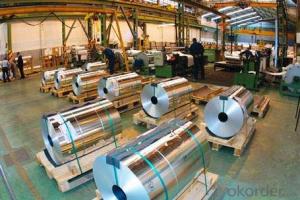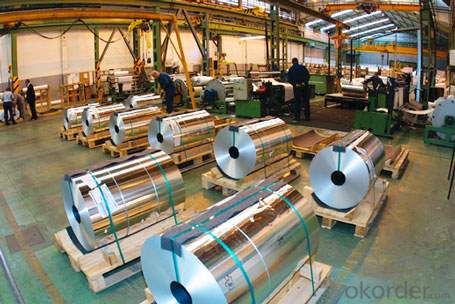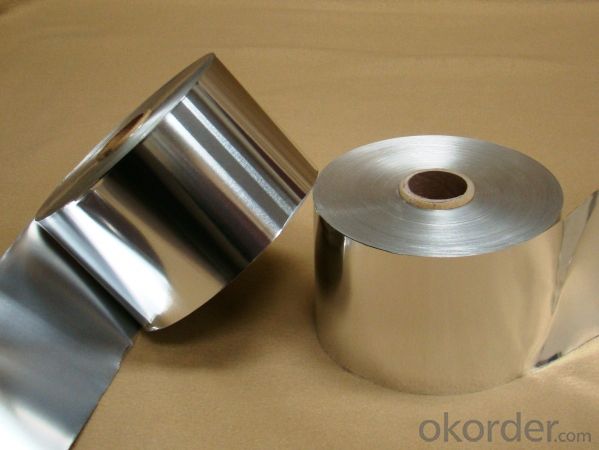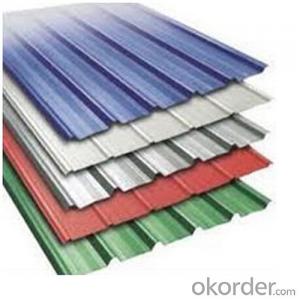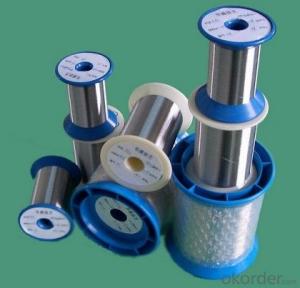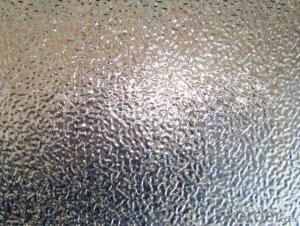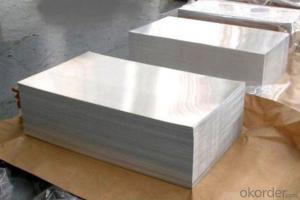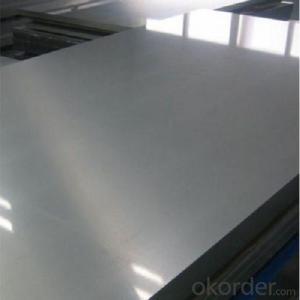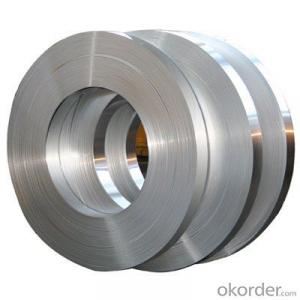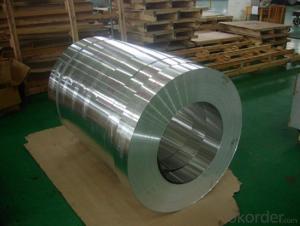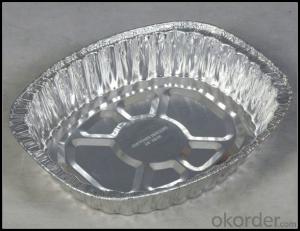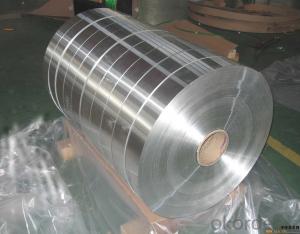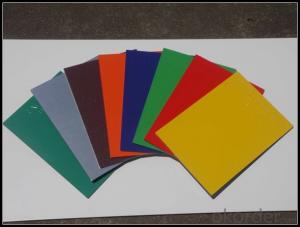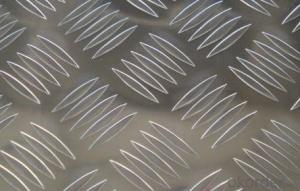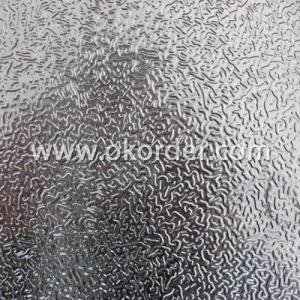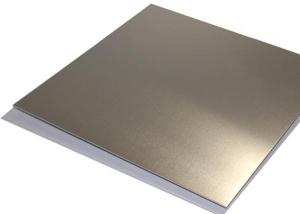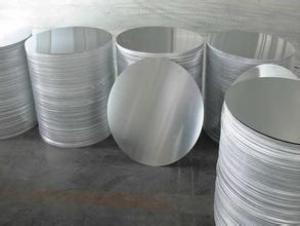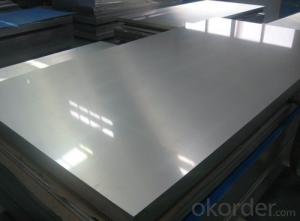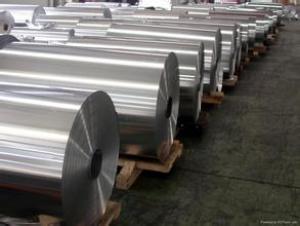Aluminum Sheets of Metal - ISO Standard Thin Aluminum Strip for Sony Xperia Z1 L39H for Decoration
- Loading Port:
- Qingdao
- Payment Terms:
- TT OR LC
- Min Order Qty:
- 5 m.t.
- Supply Capability:
- 600 m.t./month
OKorder Service Pledge
OKorder Financial Service
You Might Also Like
Specification
Aluminum Description
-Hot rolling 1100/1050/1020/1060 aluminum coils for roof sheet is used for celling, decorate, ACP,Curtain Wall,Roofing Sheet, PC base, radiator,cookware,deep drawing and more.
- 1 series Aluminum Coils temper: O-H112
-1 Series Aluminum Coils Alloy: 1100/1050/1060/1200/1035/1070
-Thickness: 0.5-10mm
-Width:200-1500mm
-Length:12m Max.
Temper: h14,h16,h18,h22,h24,h26,h32,o/f
Thickness: o.o3mm-3.0mm
Width: 30mm-1700mm
Coating: pe(polyester),pvdf,epoxy
Painting thickness: standard 16-25 mic, max 40 mic
Color: according to ral colors or customer's samples
Packaging & Delivery
| Packaging Details: | Coil ID :508MM Coil Weight : about 2.5 tons or as per customers requirement Packing ; In Export Sea worhty wooden pallets Eye to wall or Eye to Sky One container can be loaded about 20 mts |
| Delivery Detail: | within 25 days after receiving L/C deposit |
Place | China |
Grade | Aluminium coil & roll |
Alloy | 1100,1050,1060,3003,3105,5052,5083,8011 |
Temper | O,H12,H14,H16,H18,H19,H22,H24 |
Standard | GB/T3 190-1999 GB/T3 190-2003 YS/T 430-2000 |
Width | 15mm-2200mm |
Length | customized avaiable |
Inner Diameter | 75mm,150mm,200mm,220mm,300mm,405mm |
Application | Widely used in air-conditioning,cable,exchanger,cigarettes,food,medicine, decoration,packing,electrical and products,etc. |
Character. |
|
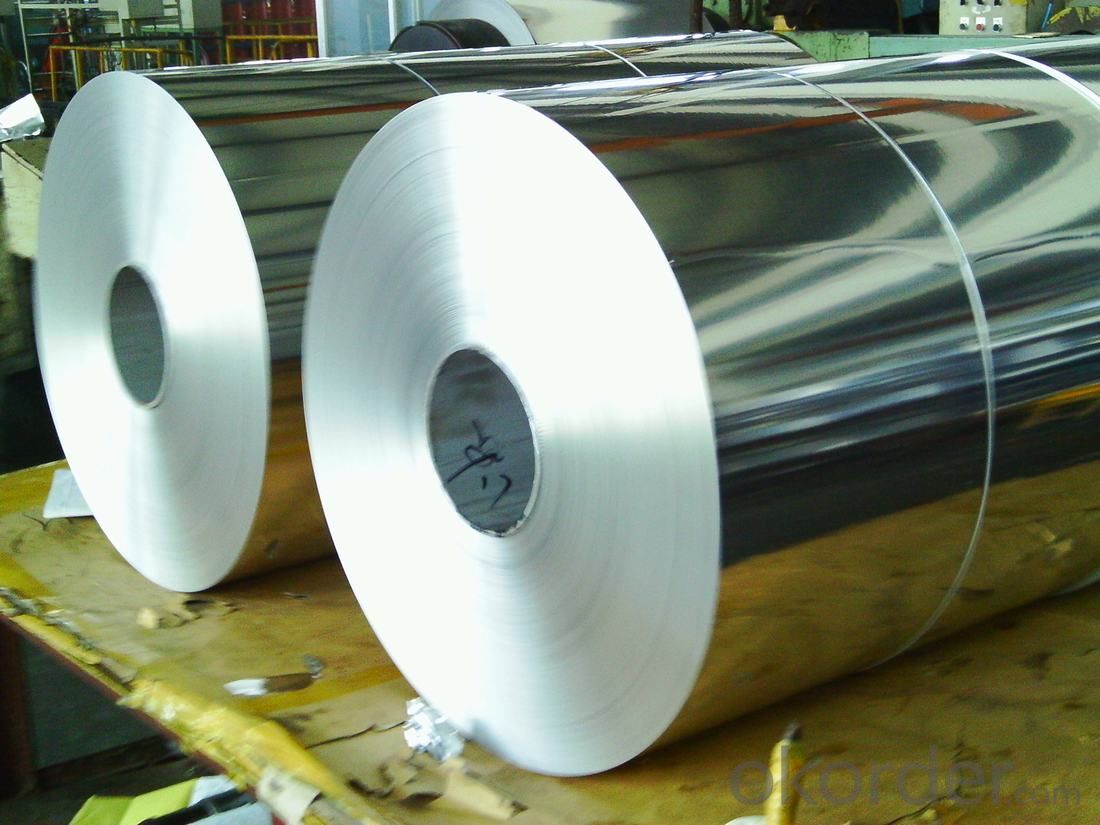
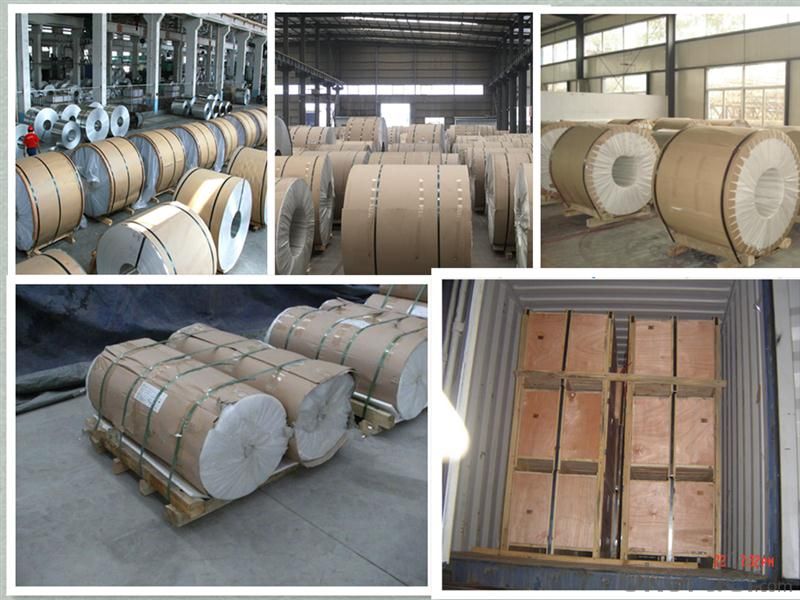
- Q: 2mm aluminum welding with oxygen welding or argon arc welding good?
- Before welding need cleaning with acetone wire and base metal surface oil and oxide layer, according to welding tungsten diameter, filler wire diameter selection of appropriate welding parameters (base current, peak current, pulse width, pulse duration, pulse frequency, duty ratio, etc.).Oxygen acetylene (or oxygen propane) flame welding, flame welding due to large heating area, directly lead to weld coarse grains, degree of weld oxidation is lower than that of AC TIG welding effect. The weld strength and mechanical properties are lower.
- Q: Can aluminum sheets be used for HVAC systems?
- Certainly, HVAC systems can utilize aluminum sheets. Aluminum proves to be a favored material for HVAC applications owing to its numerous beneficial characteristics. Its lightweight nature facilitates effortless handling and installation. Moreover, aluminum exhibits remarkable resistance to corrosion, a vital attribute for HVAC systems subject to moisture and fluctuating temperatures. Additionally, aluminum boasts exceptional thermal conductivity, ensuring efficient heat transfer. Consequently, it becomes ideal for heat exchangers and other HVAC system components. In summary, aluminum sheets emerge as a dependable and long-lasting choice for HVAC systems.
- Q: Can aluminum sheets be used for architectural facades?
- Architectural facades can indeed utilize aluminum sheets. This versatile material possesses numerous advantages for facade applications. Its lightweight nature, durability, and resistance to corrosion render it suitable for a variety of weather conditions. The fabrication and installation of aluminum sheets are effortless, enabling design flexibility and the creation of intricate and elaborate facades. Moreover, aluminum can undergo various finishes, such as powder coating, anodizing, or painting, to enhance its visual appeal and achieve the desired aesthetic. In summary, employing aluminum sheets for architectural facades empowers architects and designers with an extensive array of options to fashion visually captivating and enduring building exteriors.
- Q: Can aluminum sheets be used for heat shields in appliances?
- Yes, aluminum sheets can be used as heat shields in appliances. Aluminum is a good conductor of heat, making it an effective material for dissipating and reflecting heat away from sensitive components in appliances. Additionally, aluminum is lightweight, durable, and has good corrosion resistance, making it a suitable choice for heat shield applications in various appliances.
- Q: My aluminum storm windows are wasting energy in my home, however, the $7000 estimate to replace them is beyond (well beyond) my comfort zone.I know aluminum is a great conductor of hot and cold. I was considering cleaning the frames, and then coating them with a brush on clear or possibly white liquid rubber to reduce the conductivity. Any idea as to how much benefit I'll realize? Is flammability going to be an issue?I need some solid answers please. Trolls go get your two points elsewhere.Thanks.Your help is much appreciated.
- LJR, There could be no issues concerning reactivity or flammability with reference to putting some sort of liquid rubber coating on your aluminum window frames. Aluminum is a reasonably inert steel, or maybe has a skinny coating of aluminum oxide on its floor that reduces its reactivity much extra. Coating it with something could be completely secure. to whether you will attain reward from doing it relies upon on the layout of your dwelling house windows. i do no longer understand lots approximately dwelling house advancements, so i can not truthfully image how they're set up. in case you may coat the frames each and all of the way around so as that there isn't any way for the aluminum to habit warmth from the outer portion of the window to the interior portion of the window, then this could be fairly efficient. yet whilst portion of the frames are embedded interior the wood such which you would be able to no longer get right of entry to it to place a coating on, then coating something of them won't do lots sturdy. honestly, while you're effective which you would be able to coat the entire physique and placed it returned in the way it grew to become into, i might circulate forward and do it. If no longer, i might ask somebody at a ironmongery shop approximately different suggestions.
- Q: Are the aluminum sheets suitable for manufacturing solar reflectors?
- Yes, aluminum sheets are suitable for manufacturing solar reflectors. Aluminum is a highly reflective material that can efficiently reflect sunlight, making it an ideal choice for solar reflectors. It has a high reflectivity and low emissivity, allowing it to reflect a significant amount of solar radiation while minimizing heat absorption. Additionally, aluminum is lightweight, durable, and corrosion-resistant, making it suitable for outdoor applications. Its flexibility also allows for easy shaping and forming into various reflector designs. Overall, aluminum sheets provide excellent performance and reliability for manufacturing solar reflectors in solar energy systems.
- Q: What are the different surface patterns or textures available for aluminum sheets?
- Some of the different surface patterns or textures available for aluminum sheets include smooth, brushed, hammered, embossed, and diamond plate.
- Q: How do aluminum sheets perform in terms of fatigue resistance?
- Aluminum sheets are known for their excellent fatigue resistance. This means they are capable of withstanding repeated cycles of stress and strain without experiencing significant deterioration in their mechanical properties. Fatigue resistance in aluminum sheets is primarily attributed to their microstructure, which consists of small and uniformly distributed grains. This microstructure helps in distributing the applied stress more evenly throughout the material, preventing the formation and propagation of cracks. Additionally, aluminum sheets can be further enhanced for fatigue resistance through various processing techniques such as heat treatment, alloying, and surface treatments. These techniques can refine the microstructure, increase the strength, and improve the overall fatigue performance of the material. Moreover, aluminum has a relatively low density compared to other metals, which contributes to its superior fatigue resistance. The low density allows for better energy absorption during cyclic loading, reducing the likelihood of crack initiation and propagation. However, it is important to note that fatigue resistance can vary depending on the specific alloy, temper, and thickness of the aluminum sheet. Different aluminum alloys have different mechanical properties and fatigue limits, so it is crucial to select the appropriate alloy and temper based on the specific application requirements. Overall, aluminum sheets are well-regarded for their excellent fatigue resistance, making them a popular choice in industries requiring materials that can withstand cyclic loading and extended service life.
- Q: Are aluminum sheets prone to warping?
- Yes, aluminum sheets are prone to warping, especially when exposed to high temperatures or subjected to excessive pressure. However, the extent of warping depends on various factors such as the thickness of the sheet, the specific alloy used, and the conditions it is exposed to.
- Q: What are the different types of coatings applied to aluminum sheet?
- There are several different types of coatings that can be applied to aluminum sheet, each with its own unique properties and benefits. Some of the most common types of coatings include: 1. Anodizing: This is an electrochemical process that forms a protective layer of aluminum oxide on the surface of the sheet. Anodizing provides excellent corrosion resistance and enhances the appearance of the aluminum by creating a durable, colorful finish. 2. Powder Coating: In this process, a dry powder is electrostatically applied to the aluminum sheet and then cured under heat to form a hard, protective coating. Powder coating offers excellent durability, resistance to chipping and scratching, and a wide range of colors and finishes. 3. Paint: Aluminum sheet can also be coated with paint, which provides both aesthetic and protective benefits. The paint can be applied in liquid form and then cured under heat to form a strong, durable coating. Paint coatings offer a wide range of colors and finishes, allowing for customization and design flexibility. 4. Laminating: Laminating involves applying a thin layer of protective film or laminate to the surface of the aluminum sheet. This coating provides additional protection against scratches, abrasion, and UV damage, while also enhancing the appearance of the sheet. 5. Conversion Coatings: Conversion coatings are chemical treatments that convert the surface of the aluminum sheet into a more corrosion-resistant compound. Common conversion coatings include chromate conversion coatings and phosphating, which provide a protective layer that improves adhesion of subsequent coatings. 6. Clear Coatings: Clear coatings, such as lacquer or clear powder coat, can be applied to aluminum sheet to provide protection against oxidation and corrosion while preserving the natural appearance of the metal. Clear coatings are often used when the goal is to maintain the metallic look of the aluminum. These are just a few examples of the different types of coatings that can be applied to aluminum sheet. The choice of coating will depend on factors such as the desired appearance, level of protection required, and the specific application of the aluminum sheet.
Send your message to us
Aluminum Sheets of Metal - ISO Standard Thin Aluminum Strip for Sony Xperia Z1 L39H for Decoration
- Loading Port:
- Qingdao
- Payment Terms:
- TT OR LC
- Min Order Qty:
- 5 m.t.
- Supply Capability:
- 600 m.t./month
OKorder Service Pledge
OKorder Financial Service
Similar products
Hot products
Hot Searches
Related keywords
